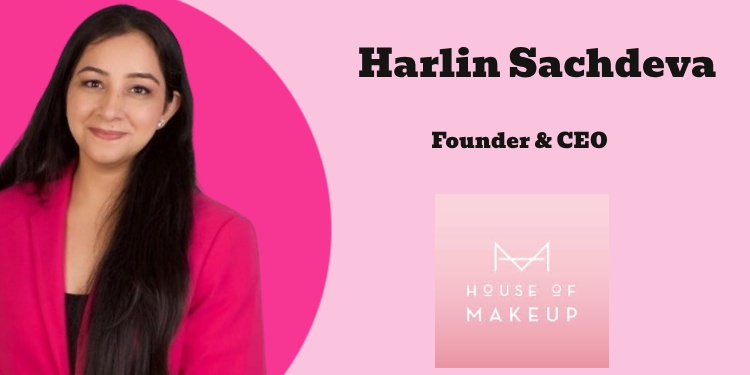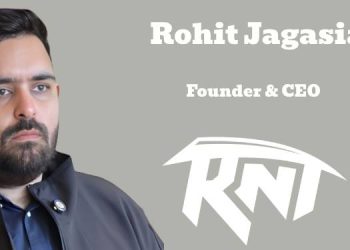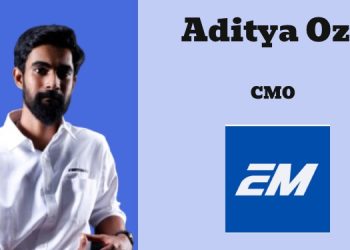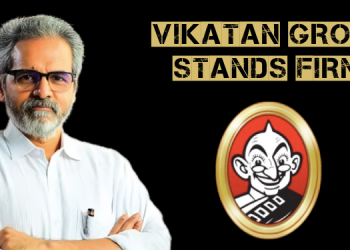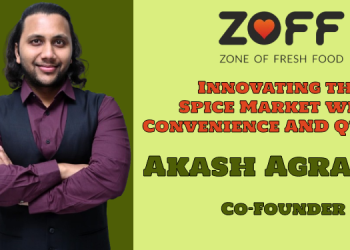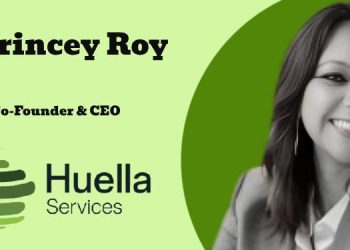House Of Makeup says that it has one mission: To make premium-quality makeup accessible to all. It believes that makeup should be harm-free, high in performance, and affordable. All three together. No excuses, no compromises. All House OF Makeup products are 100% clean, vegan, and free from animal cruelty the company claims.
It added that it is India’s first brand to follow the heavily regulated EU Cosmetic Directive that bans over 1300+ toxic ingredients in makeup formulations.
House of Makeup was launched in 2019 by Harlin Sachdeva (ex-Nykaa, ex-Sugar Cosmetics, ex-Unilever) with X SKUs in retail outlets, introducing India’s first clean makeup brand that adheres to the EU Cosmetic Directive, banning 1,300+ toxic ingredients. In 2020, amid the Covid-19 pandemic, the brand expanded its presence by launching its online store, maintaining a cash-positive status through 2022, with 70% of sales coming from its proprietary website. In 2022, it secured its first pre-Series A funding round, paving the way for a significant relaunch in 2023 with an expanded product portfolio. House of Makeup sees this as just the beginning, reaffirming its commitment to continuous innovation and excellence.
Medianews4u.com caught up with House Of Makeup Founder, CEO Harlin Sachdeva to find out more
Q. From a marketing perspective what are going to be the focus areas in 2025?
Creating more brand awareness and educating people on our products—especially the fact that they are formulated with clean ingredients, and what clean means.

Q. Could you talk about the upcoming marketing campaign and the theme?
We constantly run different marketing campaigns around seasonal topics: currently we’re working on Women’s Day, where the underlying theme is to shed light on the invisible work women still do (mainly household chores), which goes unnoticed.
Q. Is the thrust of marketing going to mainly be about Instagram and digital media? Kindly elaborate.
The audience cohort we target (Millennials and older Gen-z) is primarily consuming media online, on interactive screens. Most of their time is spent on social media sites including Instagram, so we will continue to focus our marketing efforts on digital media. We follow the data: if data shows they’re spending time elsewhere, we will accordingly change our marketing strategies.

Q. What role will lifestyle and beauty influencers play in marketing activities done?
Lifestyle and beauty content creators play a huge role in creating awareness and converting customers. However, the field has become very cluttered now, and consumers are becoming selective in whom they choose to follow. Creators who have an authentic voice will carry authority and be more important to brands.
The age of push marketing is fading away, now brands have to convince influencers too of their product, before they decide to support us. This, in our opinion, is a good shift, as it eventually helps consumers get the right information, and overall improves the quality of products in the market.
Q. Is there a paradigm shift in the way beauty is perceived today compared with 20 years back?
Yes, absolutely. In the early 2000’s, makeup was still considered an occasional use-case: you’d at best apply kajal/eyeliners and lipsticks/lip glosses on a daily bases, but concealers, correctors, foundations were something worn only on weddings or special occasions. Also, makeup was a tool to hide or cover flaws.
Today, we are more comfortable in our skin and embracing our body as is, which is an extremely positive and welcome change. Yes, we still want makeup for our imperfections, but the focus is more on enhancing rather than hiding. Imperfections, pigmentation, signs of ageing are now seen as natural and par for the course: we’re learning to accept and flaunt them. Makeup has gone from being a crutch to being our a confidence boost.
Q. Is the sales strategy going to mainly be D2C or is offline also important?
Currently, we are a D2C brand. But there is no denying the importance of offline presence to build brand awareness especially, and as a means of allowing consumers to physical sample and swatch products. Offline presence is definitely in the pipeline for House Of Makeup as we grow.

Q. Which are the cities and towns and TGs being focussed on for growth in 2025?
We’re focussing on major metro cities as well as 2-tier and 3-tier cities. We’re seeing significant growth coming from the latter.
Q. What targets have been set in terms of revenue, sales etc?
We are currently EBITDA-positive and that’s a huge milestone focus. We want to grow while ensuring that we are bottom-line positive.
Q. As House Of Makeup scales up what is going to be the big challenge?
Hiring the right talent and maintaining a strong company culture will require extra attention
Q. What role is AI playing for the company from packaging to product formulations?
AI has made leaps and bounds in the last few years: we’re using AI mainly now in design and automating tasks to improve efficiency.
Q. How does following the European Union derivatives give the company a leg up in a competitive category?
This is one of our major differentiating factors from other brands.
House Of Makeup is the first brand to follow the European Cosmetic Directive, which is the strictest standard out there for cosmetic formulations.When we say we’re clean, we follow this EU Directive that bans over 1300 ingredients that could be toxic or harmful to health: so right from something that could potentially cause allergies, to carcinogens, everything is vetted thoroughly and published in this list. And these are ingredients commonly used in cosmetic formulations around the world.
But we follow this list to the T and stay away from all these banned ingredients, even if it means we need to look for more expensive, and harder-to-find alternatives. This is hygiene for us, and over and above this, we make sure to deliver premium formulations benchmarked against the world’s best.
Q. The company has over 50 products. How much R&D goes into them?
Every product takes around 15-18 months to develop, but R&D on the product begins much earlier. In fact, R&D is a continuous process.
Our product team, led by our founder and CEO, is continuously researching on need gaps in the market, and testing product samples from manufacturers around the globe. This is happening almost daily, so we have products in the pipeline for the next 12 months.
Q. Hyper personalisation is going to be a big theme in 2025. What are the company’s plans in this regard?
For us in the beauty space, hyper personalisation is crucial: In India, we see a variety of skin tones and skin types, and we’re working toward formulating products that suit every unique skin color and that are made for different skin concerns, like dryness, oily skin, acne-prone skin, combination skin, etc.

This will only get more personalised as we move ahead: people will be able to have their own personal brand of skin tint or foundation, made specially just for their skin.

